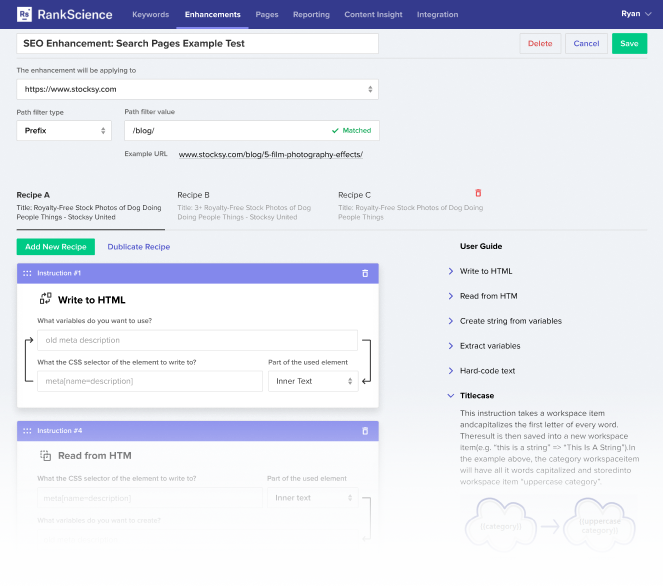
Testing variations of a website or app with statistical rigor allows you to measure and optimize your page to ensure you are maximizing conversions. As performance data is collected, the pages are analyzed to determine which version performs better. The pages are presented to users randomly. A/B testing in digital marketing and conversion optimization, also spelled as AB testing, is the process of testing two versions of a webpage or app with controlled differences. What Is A/B testing?īefore we get into the specifics of an amazing A/B testing framework, let’s just take a step back and ensure we are all on the same page when talking about A/B testing in general. If these changes are shown to statistically improve traffic, they can be implemented sitewide – it’s much easier to get development time if you can prove that the changes will increase traffic and revenue.A/B testing is something you need to be doing right now-especially when small improvements of say 1% or 2% can produce impressive revenue improvements down the line. It is possible for SEOs to use Content Delivery Networks (CDN) to roll out these changes to cached versions of the website, essentially modifying the pages before it reaches Google (or the user), without needing to make any changes in the back-end of the website. SEO A/B testing can be timely and expensive to carry out, as it requires a lot of web development time to implement these changes. This allows changes to be applied to cached versions of the website. However, technical SEOs can implement changes, without using developers, through Content Delivery Networks (CDN) and EDGE technology. Rolling out the technical changes needed to conduct SEO focused tests can be time-consuming, and brands often struggle to get the time and resource required from their development team to carry out these tests. Likewise, if conversions drop significantly, we know not to make these changes. If a hypothesis is proven to be statistically significant (the variant page has more conversions), we can roll them out permanently, and across multiple pages.

Once the test has finished, we can analyze the data, segmenting the traffic by variation to see how it was impacted.

When a visitor lands on the page, they are randomly shown either the control page, or the variant – the browser cookie ensures that this is the variation they see even if they leave and come back to the site again. Create and roll out page variants designed to test these hypotheses.Use insights to create hypotheses such as: if we make the CTA clearer, more people will convert.Gather qualitative data using customer surveys and focus groups to find out why these aren’t working.Identify which parts of the website aren’t performing well, using quantitative data taken from CRM systems, web analytics and tools such as Crazy Egg.


 0 kommentar(er)
0 kommentar(er)
